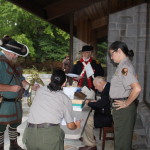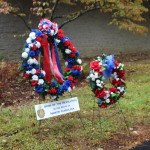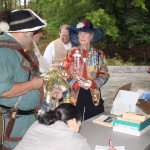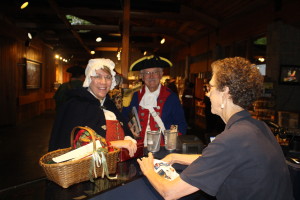
On the morning of October 7, Kings Mountain is a hotbed of activity for the Daughters and Sons of the American Revolution. Chapters that had an ancestor at the battle send representatives to lay a wreath as the U.S. Monument in a stirring ceremony. This year we had an additional reason for people to come: the dedication of a new African American monument.
During the Revolutionary War, slave owners were allowed to send a slave into battle instead of going into battle themselves. Some of the slave owners promised to free the slaves who fought in their place. A few of them actually did it. Most of these slaves fought on the Loyalist side. As the war dragged on, British forces tried to recruit slaves owned by Patriots by telling them if they fought for the British, they would win their freedom. Patriots did the same thing with the slaves of Loyalists. About 4,000 slaves were given their freedom by the British and went to live in Nova Scotia or Liberia. Very few of the slaves who fought for the Patriots were allowed their freedom after the war.
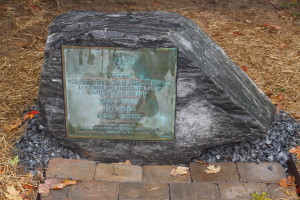
Because of all this, there were several African Americans who fought at the Battle of Kings Mountain. Three of these names are known and their descendants were invited to come and participate in the African American monument dedication. I was especially honored to talk to these descendants of men who fought courageously when it was not a battle for their freedom.
The monument was paid for by the Daughters of the American Revolution (DAR). Many of these women turned out to represent their chapters. Some wore historical costumes that were very authentic. Some wore regular dress-up clothes. We also had many Sons of the American Revolution (SAR) present dressed similarly.
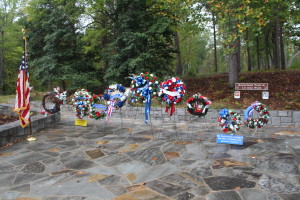
After the African American Monument dedication, the people present attended the wreath-laying ceremony just a couple of monuments down. The DAR or SAR chapter sends a wreath with a representative and all the wreaths are lined up during the ceremony and all the chapters are recognized. Then they pick up their wreaths and go home. Some of them use the same wreaths year after year.
I worked in the Visitors Center all day, so I didn’t get to see any of the ceremonies. Tom drove a golf cart (October 7 is the only day mechanized vehicles are allowed on the battlefield trail) ferrying DAR and SAR members up to the monuments for the ceremonies. We had a few people who seemed to think their position in the DAR or SAR gave them special privileges but most people were very nice and patient as we tried to work around the rain.
The African American monument isn’t the biggest or fanciest monument at Kings Mountain. It does, however, represent the courage of the men who fought at Kings Mountain. Slave or free, they all put their lives on the line for their country.

